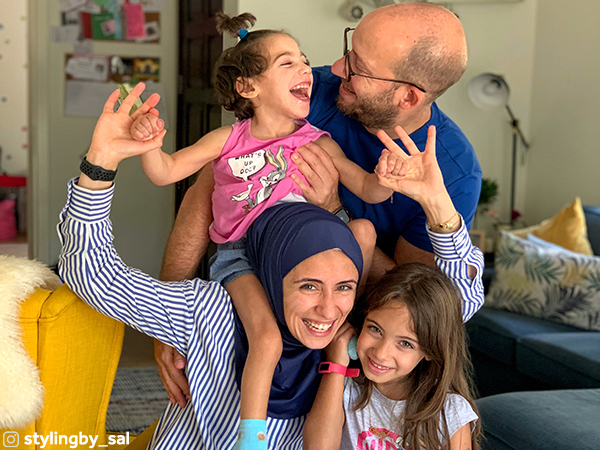In April this year, High Hopes completed our first Stepping Stones Triple P parenting workshop series. This was accessed by families and professionals alike. In this blog, we will be reviewing the basic principles and strategies of the Stepping Stones Triple P parenting approach.
Stepping Stones Triple P is a positive parenting approach, designed to be used with children of determination aged 2-12 years old. While the program targets children of determination, the strategies discussed are applicable to be used with children of all needs.
7 Core Principles
Stepping Stones follows 7 core principles, outlined below:
-
Have a safe, interesting environment
- Develop predictable routines to reduce stress and anxiety
- Provide supervision to ensure safety of your child
- Have interesting things for your child to do throughout the day and prevent boredom
-
Have a positive learning environment
- Spend quality time with your child – no distractions!
- Share your experiences with your child
- Use descriptive praise – specifically say why you are praising your child. For example, “I love how you helped to clean up your toys! Great job!”
- Use incidental teaching – show your child how to adapt to tasks throughout your routine daily tasks
- Get involved in your child’s academic and therapy programs
-
Use assertive discipline
- Create family rules which emphasise what a child should do, rather than what they should not do. For example, ‘use gentle hands’ instead of ‘no hitting’
- Praise good behaviour
- Use planned ignoring for minor misbehaviour. That is, behaviour which the child does that will not cause harm to themselves or others, such as whining.
- Give clear and calm instructions. Allow your child time to process these instructions before repeating them.
- Remove the problem activity if possible.
-
Adapting to a child with a disability
- Acknowledge any grief or loss
- Decrease demands which cause stress
- Find healthy coping strategies
-
Have realistic expectations
- Are the expectations for your child relevant to them right now?
- What is your child ready to learn?
- Are your expectations of yourself realistic?
-
Being part of the community
- Prepare community outings in advance to increase your chance of success
- Set rules for the outing
- Praise good behaviour
- Manage misbehaviour at the time is occurs
- Review how the outing went and make changes for the future
-
Take care of yourself as a parent
- Have realistic expectations of yourself and your family
- Reduce negative thinking
- Work as a team within the family to support each other
Teaching Skills to your Child
When considering a new skill to teach your child, these 6 steps are recommended.
- Choose the skill – consider what your child can do and motivated to learn
- Break the skill into smaller steps
- Choose appropriate rewards – these can be an activity, food or attention
- Decide when and where you will teach the skill. Make sure this is a time when you can provide full support and attention to your child.
- Use effective teaching strategies such as giving clear, calm instructions, showing your child what to do in a way they understand, adapt how much support you provide and reward them for their efforts.
- Keep track and review progress – this helps to provide an objective perspective on the situation.
Keep in mind that when you offer rewards to your child, these can be in many different forms. Attention is the quickest and easiest to provide but be careful to provide positive attention! Any type of attention will create an interaction with your child, which usually is what they are looking for. So, if you keep talking to them while they are whining, you are reinforcing that behaviour as you are providing them attention. Food can also be a quick reward to provide. Ensure that the size of the food reward matches the size of the challenge – 1 M&M is often enough, not the whole bag.
Managing Problem Behaviour
Another concept taught in the Stepping Stones Triple P approach is to track your child’s behaviour to find out what may be triggering and/or reinforcing it. That means keeping track of exactly when the behaviour occurs (crying and throwing toys), what happened directly before the behaviour (you asked your child to tidy up) and what happened afterwards (you let them keep playing to stop them crying). By recording this in an objective manner, you remove the emotion associated to the situation to better determine exactly what the function of the behaviour is. Once you figure out why the behaviour is occurring, you can adjust the triggers and reinforcers.
This approach is of course one of many available parenting approaches. Not everyone will agree with it, but I can tell you from a therapist perspective that once the approach is used consistently across settings, positive behaviour improves and undesirable behaviour decreases. It is your job as the parent to maintain the boundaries you have set and reinforce the consequences and rewards decided on at the start of this journey. Consistency is key!
If you would like to learn more about this approach and how it could help you reinforce positive behaviours, please contact our team.




